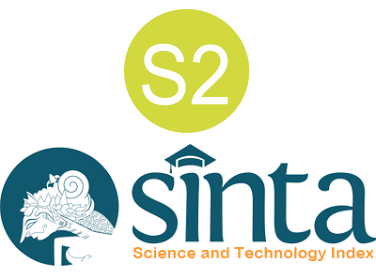Sistem Pemujaan Soroh Nyuwung Di Desa Abianbase Kabupaten Gianyar
(Kajian Teologi Hindu)
DOI:
https://doi.org/10.37329/jpah.v9i4.3226Keywords:
Worship, Soroh NyuwungAbstract
This research discusses one Soroh (lineage group) in Abianbase Village, Gianyar Regency, which has a different worship system compared to other Sorohs in Bali. Therefore, this study aims to map the subsystems that form part of a complete worship system. These include the beliefs held by Soroh Nyuwung, the presence of the Dukuh figure as a religious leader for Soroh Nyuwung, and the structuring of sacred places that serve as media for worship for Soroh Nyuwung in Abianbase Village, Gianyar Regency. This research is qualitative with an ethnographic approach. Data was obtained through observation at the location, interviews with religious leaders of Soroh Nyuwung, and document studies in the form of copies of the Soroh Nyuwung inscription which contains the rules of life for Soroh Nyuwung. The data was analyzed through data reduction, classification, and display processes, as well as conclusion drawing and verification, ultimately being presented descriptively and narratively. The research results show that the Soroh Nyuwung worship system contains three subsystems: belief in Hyang Sinuhun Kidul, who for Soroh Nyuwung is closely affiliated with Bhatara Brahma and is believed to be the ancestor who created the descendants of Soroh Nyuwung. Furthermore, there is the existence of a figure titled Dukuh as the sole leader in every ceremony. Dukuhs are stratified into two types: Dukuh Pengarep and Dukuh Pengabih. There are also sacred places or places of worship for Sang Hyang Sinuhun Kidul called Gedong Sinapa, located in Pura Panti and Sanggah Pamerajan, which are known to have existed since ancient Balinese times. These three subsystems synergize to form a rigid system, creating a systemic pattern of worship by Soroh Nyuwung towards the entity they sanctify, namely Sang Hyang Sinuhun Kidul.
References
Amirin, T. M. (2001). Pokok-Pokok Teori Sistem. Jakarta: PT Rajagrafindo Persada.
Ardika, W., Parimartha, I. G., & Wirawan, A. A. B. (2013). Sejarah Bali. Denpasar: Udayana Press.
Ardiyasa, I. N. S. (2018). Peran Mpu Kuturan dalam Membangun Peradaban Bali (Tinjauan Historis, Kritis). Purwadita: Jurnal Agama dan Budaya, 2(1).
Bakta, I. M., Cika, I. W., & Suarka, I. N. (2015). Meniti Kehidupan: Berguru dari Pengalaman dan Riwayat Leluhur Pande di Bali. Denpasar: Udayana Press.
Bertalanffy, L. Von. (1968). General System Theory. New York: George Braziller.
Guermonprez, J. F. (2012). Soroh Pande di Bali : Pembentukan Kasta dan Nilai Gelar. Denpasar: Udayana Press.
Harsananda, H. (2018a). Upacara Mabersih Dukuh warga Nyuwung di Desa Abianbase Gianyar. Pangkaja: Jurnal Agama Hindu, 21(2).
Harsananda, H. (2018b). Upacara Mabersih Dukuh warga Nyuwung di Desa Abianbase Gianyar. Pangkaja: Jurnal Agama Hindu, 21(2).
Titib, I. M. (2003). Menumbuhkembangkan Pendidikan Budhi Pekerti Pada Anah (Perspektif Agama Hindu). Bandung: Ganeca.
Jiwa, P. M. P. (2013). Prasasti & Babad Pande : Mencari jati Diri, Mengamalkan Bisama Batara Kawitan, Menuju Ajeg Bali. Surabaya: Paramita.
Netra, A. A. G. O. (1997). Tuntunan Dasar Agama Hindu. Jakarta: Hanoman Sakti.
Pals, D. L. (2012). Seven Theories Of Religion (2nd ed.). Djogjakarta: IRCiSoD.
Paramarta, M. (2022). Bentuk Dan Fungsi Balai Basarah Hindu Kaharingan Di Desa Pangi Kecamatan Banama Tingang Kabupaten Pulang Pisau. Bawi Ayah: Jurnal Pendidikan Agama dan Budaya Hindu, 13(1), 2036-2036.
Rai Armita, I. G. A., Sura, I. G., Dunia, I W., Kade Sindu, I. B., Dalem, I. G. K., & Sukayasa, I. W. (1995). Alih Aksara dan Alih Bahasa Teks Lontar Bhuwana Sangksepa. Denpasar: Kantor Dokumentasi Budaya Bali.
Rema, N. (2014). Tradisi Pemujaan Leluhur Pada Masyarakat Hindu di Bali: Ancestor Worship Tradition At Hindu Society In Bali. Jurnal Forum Akeologi, 27(1), 1-12.
Segara, I. N. Y. (2023). The Future of Hindu Alukta in Tana Toraja Post-Integration with the Hindu Religion. Heritage of Nusantara: International Journal of Religious Literature and Heritage, 12(2), 217-259.
Suhardana. (2015). Pedoman Pinandita. Surabaya: Paramita.
Suhardana, K. M. (2008). Dasar-Dasar Kesulinggihan. Surabaya: Paramita
Sukrawati, N. M. (2020). Eksistensi dan Peranan Pandita Bali Aga di Kota Denpasar. Denpasar: UNHI Press.
Suyoga, I. P. G. (2018). Arsitektur Wadah, dari Tradisi ke Industri. In SENADA (Seminar Nasional Manajemen, Desain dan Aplikasi Bisnis Teknologi) (Vol. 1, pp. 321-327).
Teeuw, A. (1988). Sastra dan Ilmu Sastra/Pengantar Ilmu Sastra. Jakarta: Pustaka Jaya.
Downloads
Published
How to Cite
Issue
Section
License
Copyright (c) 2025 Hari Harsananda, I Nyoman Yoga Segara, I Wayan Wastawa

This work is licensed under a Creative Commons Attribution-ShareAlike 4.0 International License.
An author who publishes in the Jurnal Penelitian Agama Hindu agrees to the following terms:
- Author retains the copyright and grants the journal the right of first publication of the work simultaneously licensed under the Creative Commons Attribution-ShareAlike 4.0 License that allows others to share the work with an acknowledgement of the work's authorship and initial publication in this journal
- Author is able to enter into separate, additional contractual arrangements for the non-exclusive distribution of the journal's published version of the work (e.g., post it to an institutional repository or publish it in a book) with the acknowledgement of its initial publication in this journal.
- Author is permitted and encouraged to post his/her work online (e.g., in institutional repositories or on their website) prior to and during the submission process, as it can lead to productive exchanges, as well as earlier and greater citation of the published work (See The Effect of Open Access).
Read more about the Creative Commons Attribution-ShareAlike 4.0 Licence here: https://creativecommons.org/licenses/by-sa/4.0/.








